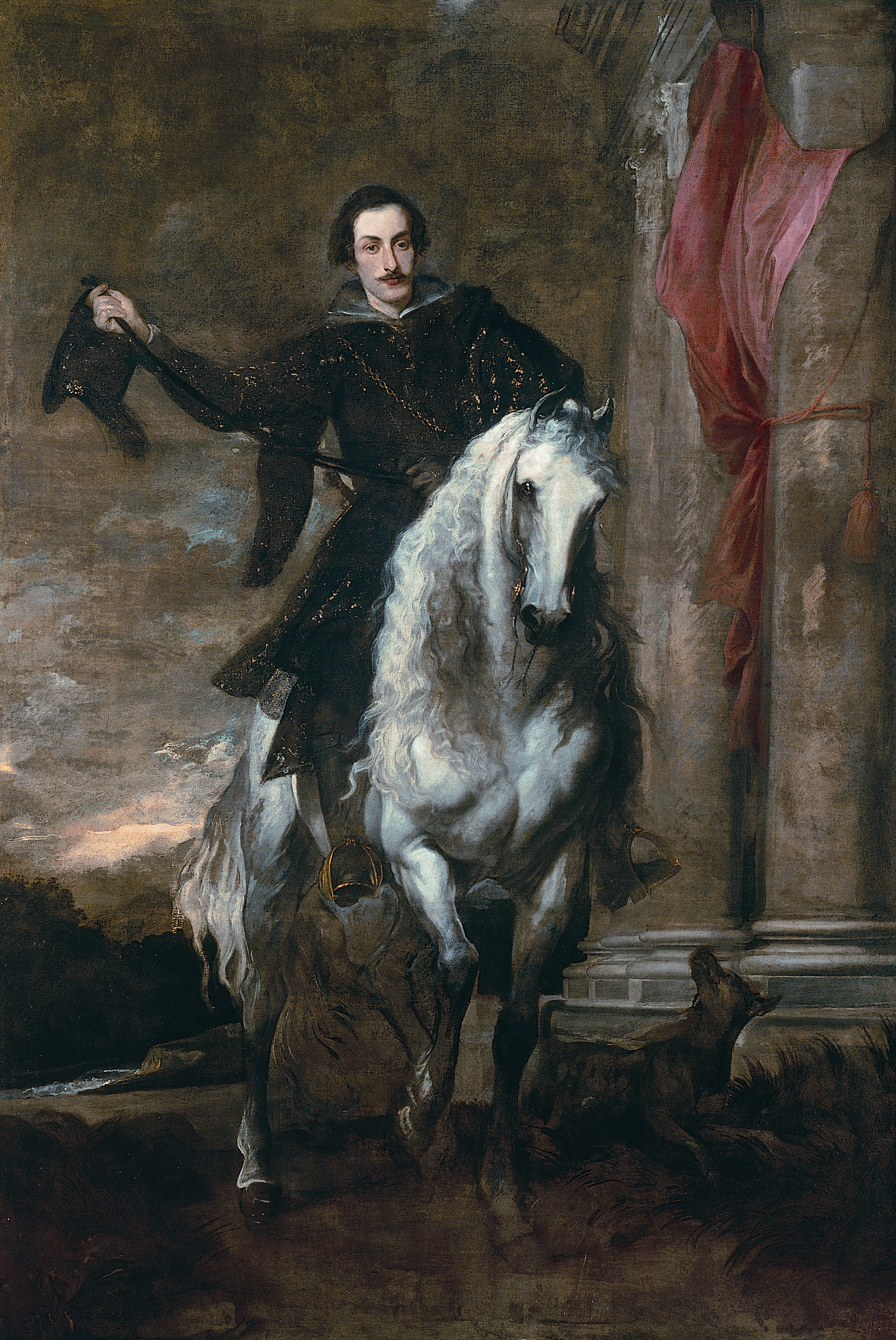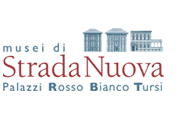
Click here to view image
Anton Giulio Brignole-Sale on horseback
Maria Brignole-Sale De Ferrari 1874 Genova - donazione
Van Dyck, Antoon
painting
PR 48
Unità di misura: cm; Altezza: 282; Larghezza: 198
olio su tela
Cento opere di Van Dick - Genova - 1955<br>Van Dyck a Genova. Grande pittura e collezionismo. - Genova - 1997<br>Van Dyck - Anversa - 1999
The portrait of Anton Giulio Brignole-Sale, together with that of his wife Paolina Adorno, constitute one of the rare examples of en pendant portraits by Van Dyck that still remain together. They are also the only ones among the fifty from Van Dyck's Genoese period for which the specific payment recorded in the account books of the Brignole-Sale family in 1627 is preserved: with a third painting, depicting Geronima Sale Brignole with her daughter Aurelia, his mother and sister respectively, they were paid to the painter in 1627-the final year of his Genoese sojourn-a total of 747 liras. These are probably the last paintings executed by the Flemish artist in Genoa, a city where he arrived in 1621 as Rubens' “best disciple,” soon enjoying extraordinary success with the new city nobility, who, well aware of the even symbolic value of the images and the celebratory message they conveyed, competed to be portrayed by the young artist. Anton Giulio Brignole - Sale, inheriting from his maternal grandfather the fief of Groppoli and the related title of marquis was officially ascribed to the Genoese aristocracy in 1626; the following year, barely 22 years old, he had himself depicted by Van Dyck on horseback and in a courtly pose, until a few years before reserved for a sovereign, emphatically celebrating his newly achieved social status. The compositional model of this equestrian portrait depends on famous Rubensian examples such as the Gio. Carlo Doria (Genoa, gallery of Palazzo Spinola) and the Duke of Lerma (Madrid, Museo del Prado), but the pictorial material with which it is made turns out to be very different from the rich and mellow material of the famous master. The Palazzo Rosso canvas, in fact, is constructed with a very rapid technique of execution, played for glazes of white lead and varnish but not of “body” colors, which ensures a great effect of matter without any real substance, as typical of the works of 1626-1627. They have always belonged to the household picture gallery and are the only ones to have remained in the residence of the family for whom they were painted. Ridolfo I, son of the effigy couple, brought them to the Brignole-Sale family's new residence, Palazzo Rosso, after the mid-17th century, where they remain today. In 1687 they were bought back by the cadet Gio. Francesco I, at a time when, his brother having died without male descendants, they would have ended up in foreign hands. Portrait of Anton Giulio Brignole-Sale while sitting on a horse.




